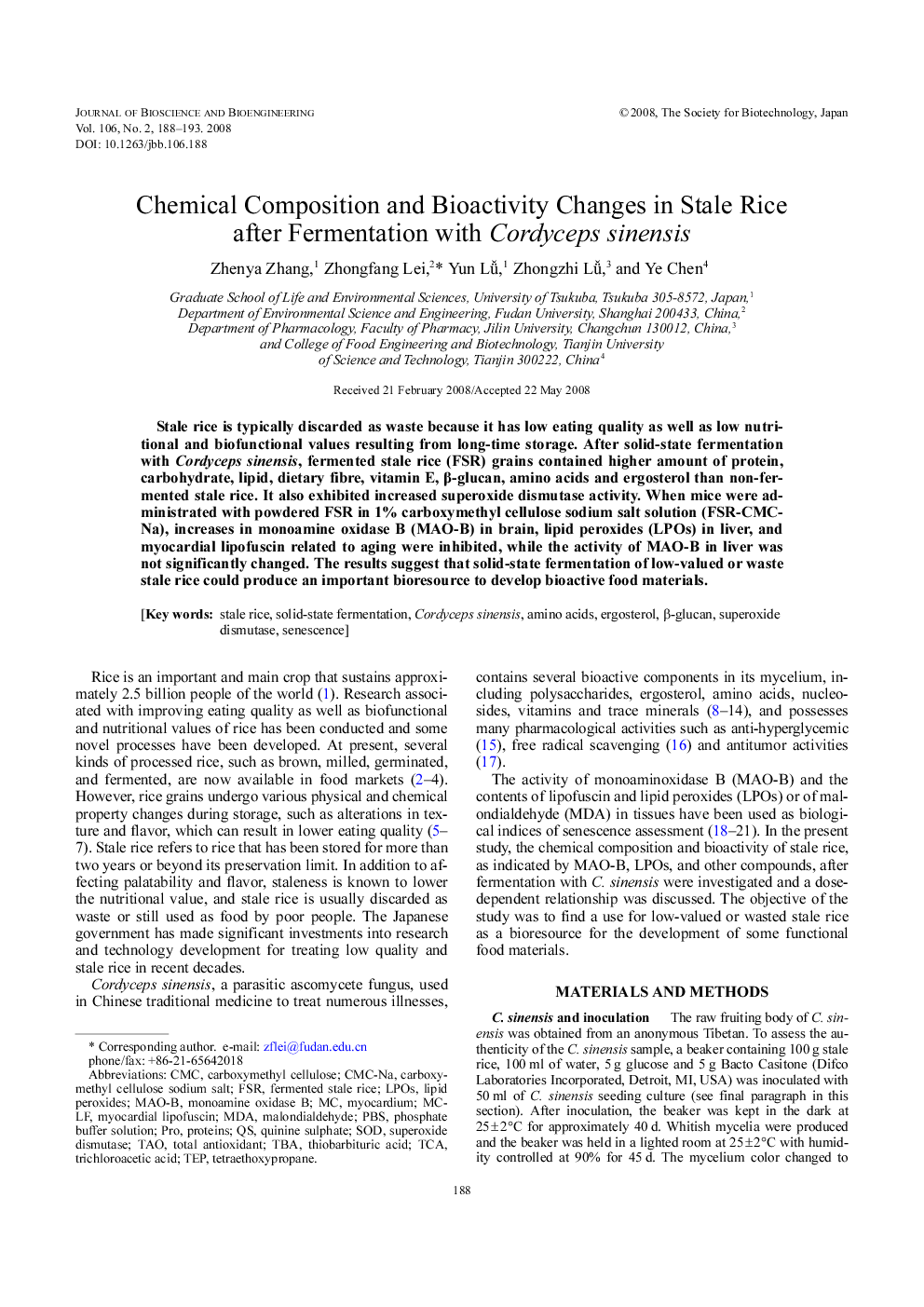| Article ID | Journal | Published Year | Pages | File Type |
|---|---|---|---|---|
| 21659 | Journal of Bioscience and Bioengineering | 2008 | 6 Pages |
Stale rice is typically discarded as waste because it has low eating quality as well as low nutritional and biofunctional values resulting from long-time storage. After solid-state fermentation with Cordyceps sinensis, fermented stale rice (FSR) grains contained higher amount of protein, carbohydrate, lipid, dietary fibre, vitamin E, β-glucan, amino acids and ergosterol than non-fermented stale rice. It also exhibited increased superoxide dismutase activity. When mice were administrated with powdered FSR in 1% carboxymethyl cellulose sodium salt solution (FSR-CMC-Na), increases in monoamine oxidase B (MAO-B) in brain, lipid peroxides (LPOs) in liver, and myocardial lipofuscin related to aging were inhibited, while the activity of MAO-B in liver was not significantly changed. The results suggest that solid-state fermentation of low-valued or waste stale rice could produce an important bioresource to develop bioactive food materials.
